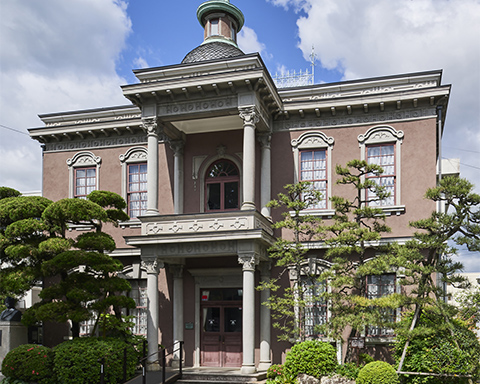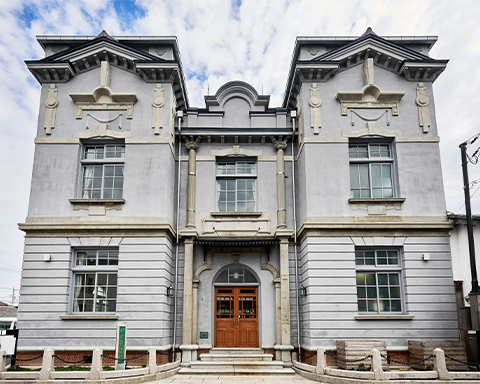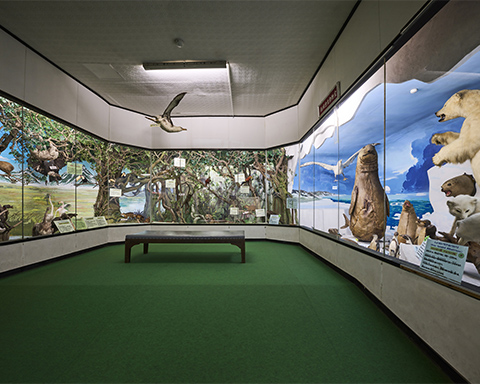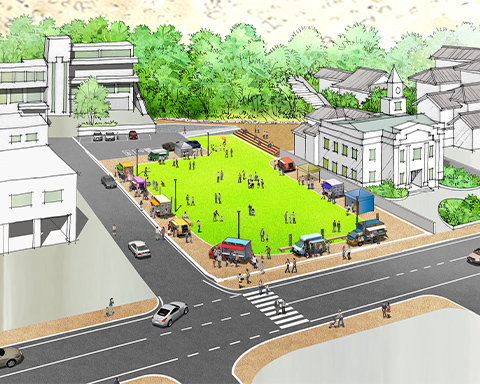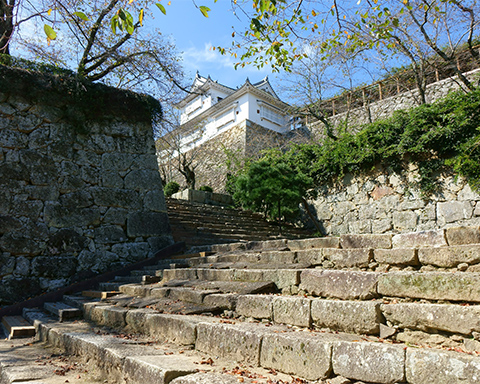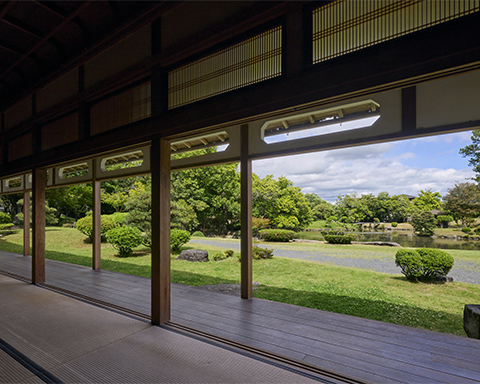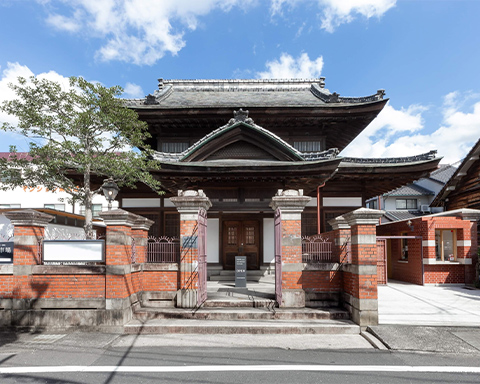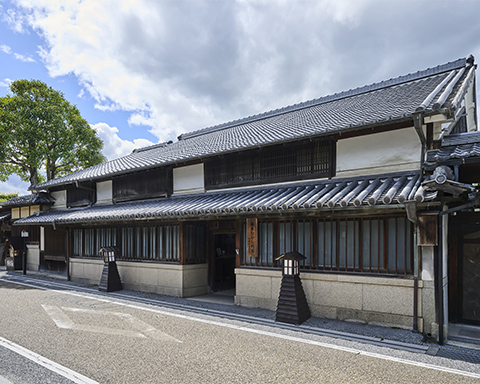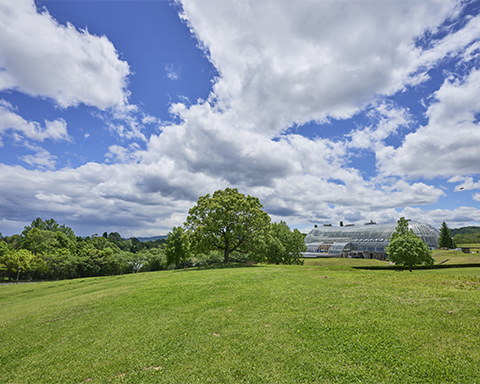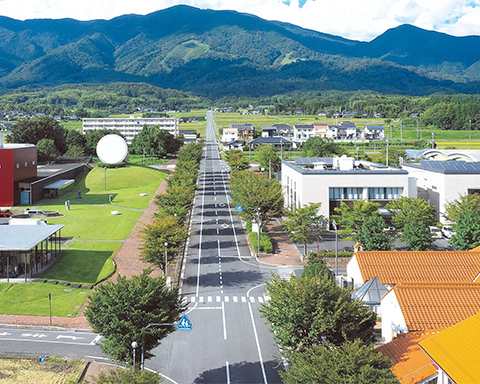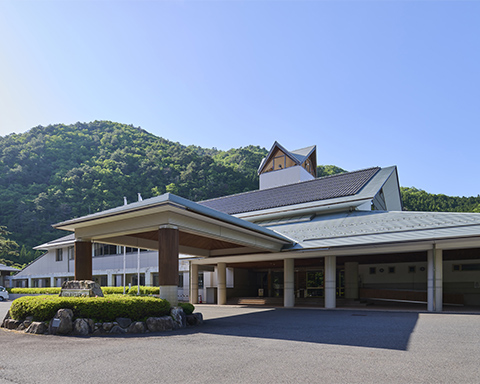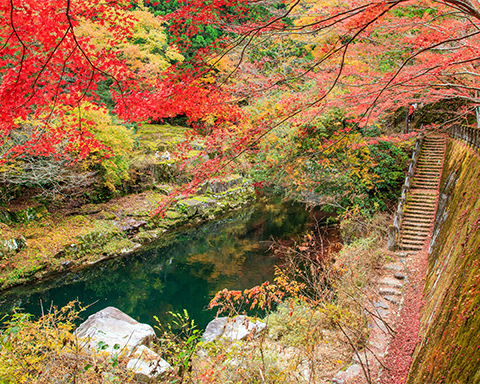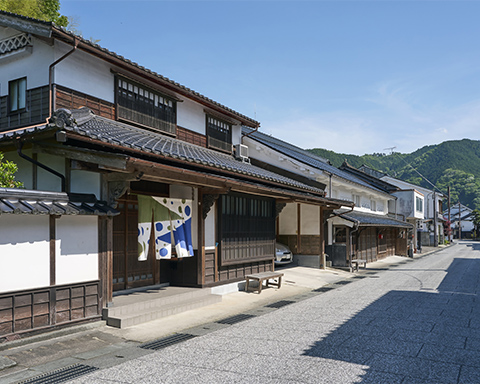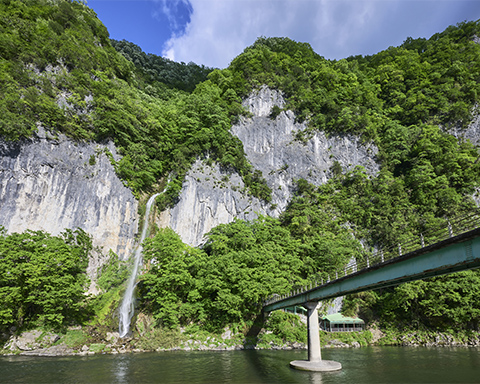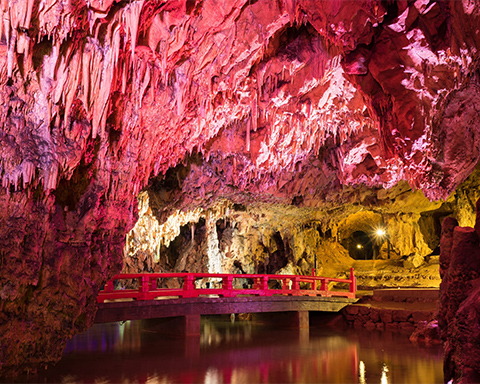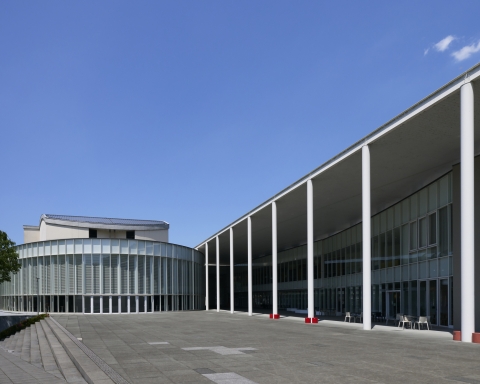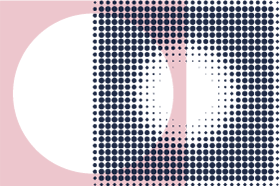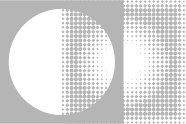Area on the periphery of Tsuyama Castle,
Tsuyama City
T
The city of Tsuyama has a rich history and culture, and to this day it remains northern Okayama's major city. In the Edo period, the castle town around Tsuyama Castle (present-day Kakuzan Park) flourished out to the east and west, and wooden buildings from that time still line the streets. Together with western-style architecture from the later Meiji and Taisho eras, visitors can feel the prosperity and deep history of the city's past throughout Tsuyama's central area. Additionally, the Old Tsuyama Fan-shaped Locomotive Depot built in 1936, and the Shurakuen Garden, a nationally designated place of scenic beauty, are also located in central Tsuyama, adding to this hub of history and culture.
In this way, a variety of natural, historic, and cultural resources all blend together to create the current form of Tsuyama city. Visiting the Shurakuen Garden, the traditional townscapes, the Taisho Era Western architecture, the Tsuyama Manabino Railway Museum from modern history, and other sights allows you to physically trace the city's history from the Edo Period through the Modern Era. Now, artists have brought this history back to life in the current day through skillfully woven stories. Their works present a new appreciation and modern updates to traditional crafts and handiwork.


